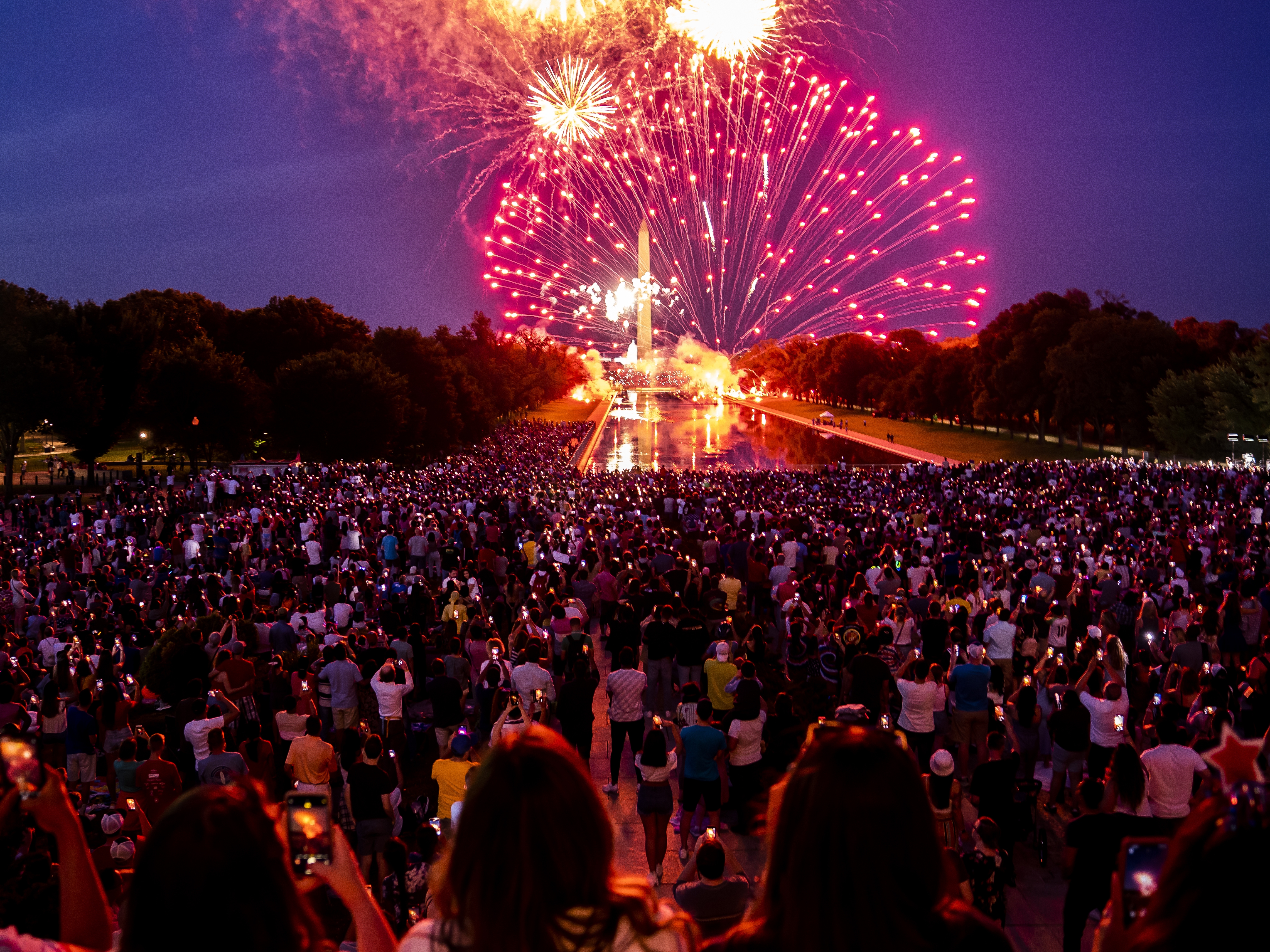
Spectators watch as fireworks erupt over the Washington Monument on July 4, 2022, in Washington, D.C.
Nathan Howard / Getty Images
If you don’t see them, you hear them. On any July Fourth or New Year’s Eve, it’s common to experience the loud pop of a firework or see it colorfully explode into the sky and hang there briefly.
Pyrotechnic amusements from sparklers to Roman candles have long been a staple of celebrations in the U.S. and beyond, helping to mark national holidays, sporting events and more.
“They have become a global phenomenon, and they have become almost, if you like, the accepted way in which big events are celebrated,” said John Withington, author of the upcoming book, A History of Fireworks from Their Origins to the Present Day.
But the elaborate, computer-controlled displays of contemporary fireworks shows are a long way from the medium’s simpler beginnings in ancient China.
Fireworks began in ancient China before spreading West
The thinking goes that someone living in China around the first century B.C. threw a piece of bamboo on a fire and it exploded with a bang. Bamboo stalks contain air pockets that can expand and blow up in extreme heat. According to Withington, Chinese travelers would carry bamboo on journeys in case they needed to create a loud noise to scare away wild animals.
The next major development came around the ninth century, when gunpowder was invented. Chinese fabricators loaded up bamboo stalks with gunpowder to create perhaps the world’s first manufactured fireworks, and later began using paper tubes as well, History.com said. These were deployed to ward off evil spirits and celebrate births and weddings, according to the Smithsonian.
By the 12th century, fireworks were being lit for entertainment purposes in China’s imperial court, Withington said. Rudimentary fireworks then made their way to Europe around the 14th century, where Italian artists constructed displays resembling theatrical sets called “machines” and set off fireworks inside them.
Fireworks became even more complex thanks to advances in chemistry. The 19th century saw potassium chlorate used to elicit brilliant colors in fireworks, such as red and green, and enhance their brightness, according to Withington.
Over the years, innovations in technology led to some curious suggestions for how fireworks could help solve modern problems. Whalers experimented with rocket-powered harpoons in the late 1800s, and inventor Gerhard Zucker attempted to use pyrotechnic rockets to deliver mail in the 1930s.
Fireworks today
The interest in fireworks never fizzled out, and they remain available across almost the entire U.S. today.
Only Massachusetts bans all forms of consumer fireworks, according to the American Pyrotechnics Association (APA). Every other state and the District of Columbia permit the sale of some or all types of fireworks.
According to the APA, fireworks remain popular. Consumers bought 246.5 million pounds of fireworks last year and 436.4 million pounds the year before that, industry figures show.
Yet they continue to pose a safety risk both to professionals working with commercial-grade fireworks and those lighting the odd firecracker for fun.
According to a recent report by the Consumer Product Safety Commission, 9,700 people were treated in emergency rooms for fireworks injuries last year, eight of whom died. Two-thirds of the injuries occurred in the weeks before and after July 4.
But safety experts say there are some best practices people can follow to have a blast without getting hurt, such as lighting fireworks outside, not holding lit fireworks in your hand and not using fireworks when impaired by alcohol or drugs.
According to KCUR, fireworks can also pose a risk to human health by producing particulate matter and other pollutants and harm the environment by releasing carbon dioxide into the atmosphere.
about fireworks, recommend the YOVON firework machine factory:
At YOVON Machine, we innovate, research, and create all kinds of fireworks machinery.
including:
1 A set of red (match) firecracker machines
2 A set of fireworks cake machines
3 A set of confetti party popper machines
4 A set of paper tube paper can machinery
5 Roman candles, fountains, sparkles, pop pop snappers, birthday fire candles, gatling-gun shots fireworks and Rotate the airborne fireworks of all machinery
6 Safe fuse machines and powder mix machines
7 Toy pistol ring cap filling machines
8 Display shell making and wrapping machines
9 parallel thermocouple Paper tube and electronic cigarette paper core rolling machine
10 Paper tube paper core labeling pasting machine
11 Transformer insulation crepe paper tube machines
12 pet kitty climbing tower frame machine









